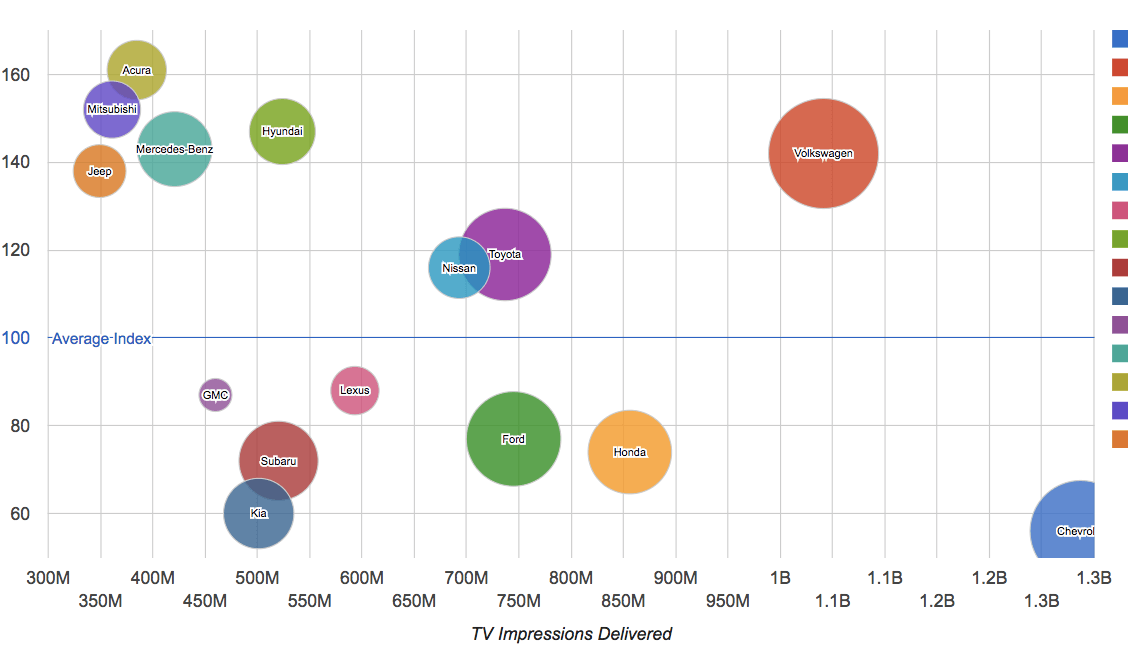iSpot.tv launches attention-getting analytics for TV ads
Its three new modules track viewers’ attention by measuring when they change the channel or otherwise show lack of interest.

An example of iSpot.tv’s new Creative Wear analytics, showing attention drop over time.
iSpot.tv monitors TV ads, getting regular data streams from software on 10 million Vizio TVs.
Today, the Bellevue, Washington-based company is taking its ad monitoring a step further by releasing three analytics products to measure viewers’ attention when ads are shown. CEO and founder Sean Muller told me that this is the first large-scale real-time solution for measuring attention and its falloff across all TV ads.
Owners of these Vizio sets have opted in or out when the set first turns on. If they ignore the option after five times of set turn-ons, Muller says the software assumes that’s an opt-out. But, he added, if you opt out, you don’t get the TV program recommendations made available from iSpot data.
The three new analytics products are based on data iSpot has been collecting over the last several years, which measures four kinds of explicit interruptions: changing the channel, pulling up the guide, fast-forwarding or turning off the TV. In the past, however, the data was only made available through a few metrics, such as average viewing rate of an ad, not through separate analytics packages that give a more complete view.
The three new products are:
- Creative Wear, which tracks daily changes in attention over the lifetime of an ad, indicating if viewers are getting tired of an ad. (See a screen showing Creative Wear for a Geico ad, at the top of this page.)
- Attention Score shows the ad’s average view time, based on the four interruptive viewer actions mentioned above.
- Attention Index compares a TV ad’s performance or campaign against relative interruptions by a competitor or the industry at large. (See screen below.)

iSpot’s Attention Index
Muller acknowledged that iSpot is actually measuring lack of interest, indicating when a viewer has chosen another TV option. The implication is that, if there’s not a lack of interest, there’s interest, because the data doesn’t show if you’re reading while the TV is on or if you’ve left the set on after leaving the room.
He noted that a lot of brands are looking to measure TV ads by the kind of viewability — which some describe as attention metrics — that has been generally available for online ads.
Contributing authors are invited to create content for MarTech and are chosen for their expertise and contribution to the martech community. Our contributors work under the oversight of the editorial staff and contributions are checked for quality and relevance to our readers. MarTech is owned by Semrush. Contributor was not asked to make any direct or indirect mentions of Semrush. The opinions they express are their own.
Related stories
New on MarTech